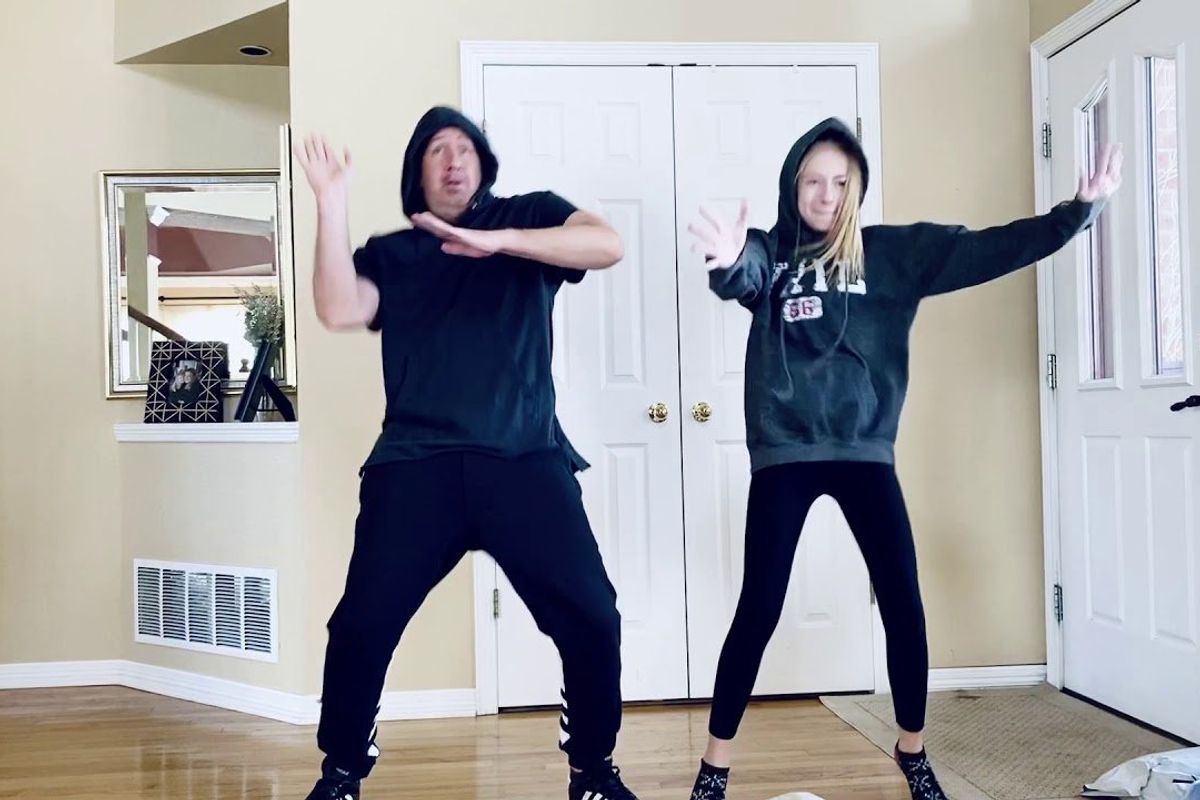Knowing the differences between 'delayed drowning' and 'dry drowning' could save a life
It can be easy to miss the signs.

Important summer tips.
In 2008, a young boy named Johnny Jackson went swimming and accidentally swallowed some water.
He had a short coughing fit, toweled off, and then went home. No big deal.
Or so his parents thought.
A few hours later, after going down for a nap, Johnny passed away.
In 2014, a toddler named Ronin came frighteningly close to the same fate. He slipped briefly into a pool before being pulled to safety by his mother. Ronin was shaken up but seemed fine.
Later that night, he lay stretched out in an ambulance as it screamed toward the hospital, where he arrived just in time.
Stories like these have resulted in an outburst of news coverage around what's being referred to as "dry drowning." But that's a bit of a misnomer.
Since we're entering the season of pool parties and beach trips, here are a few things you really need to know about what actually happened to Ronin and Johnny.
First, there is a difference between dry drowning and delayed drowning.
With dry drowning, water never enters the victim's lungs. Rather, it causes the vocal chords to spasm and shuts off airways without actually filling the lungs with water. Otherwise, it looks a lot like normal drowning because it occurs in real time and causes asphyxiation.
Delayed drowning, sometimes called secondary drowning, is a bit different. In cases like Ronin and Johnny's, water gets into the lungs in small amounts — not enough to disable breathing right away. Instead, it sits there and inhibits the lungs' ability to oxygenate blood. From there, the victim starts to have more and more trouble breathing over the course of several hours.
Second, drowning doesn't look the way it does in the movies.
Whether you're dealing with normal, dry, or delayed drowning, don't expect a dramatic scene full of thrashing, coughing, and yelling.
According to Dr. Anna Mendenhall of the Children's Physicians Medical Group, 9 out of 10 children who drown do so even though they were being supervised by a parent because it's so easy to miss the signs.
Here's what you need to look for, even hours after you've left the pool or beach:
- Difficulty breathing, coughing, chest pain, or throwing up. Look for rapid and shallow breaths, nostril flaring, or a pronounced gap in the ribs when breathing. These are all signs a child is working too hard to get oxygen.
- Extreme tiredness. Big-time fatigue can be a sign that the brain isn't getting enough oxygen.
- Any odd change in behavior. Kids in the beginning stages of delayed drowning may be really cranky, argumentative, or combative.
- Odd physical changes. Look out for blue lips or pale skin.
Most likely these symptoms will go away over time. But if they don't or they get worse, you might want to call your pediatrician on the way to the emergency room.
And the best way to watch for drowning in the moment? Get in the pool with your kids and stay within an arm's reach. It's the only way to make sure you don't miss anything.
Third, don't panic. Delayed and dry drownings combined make up only 1% to 2% of all drowning incidents.
There's no getting around it. This is really scary stuff, especially to a parent.
I have a 2-month-old daughter, and my first reaction to all of this is to literally never let her near a swimming pool. Ever.
But as scary as they are, these unusual cases are just that — unusual.
It's a really good idea teach your kids about basic water safety and get them comfortable in the pool with swim lessons at an early age (experts say 4 or 5 is a good age to start). But I'll say it again:
The single best thing you can do to protect a child from drowning — wet, dry, or otherwise — is to get in the pool with them.
As long as you're prepared, pools can be great for fun things like throwing your children! Photo from Thinkstock.
At least until they're old enough to be embarrassed by your presence.
This article originally appeared on 07.02.15
- 6 songs that seem romantic but aren't, and one that seems like it isn't but is. ›
- Two trick to clear your stuffy nose instantly - Upworthy ›
- Dad shows how he stops his 2-month-old from crying in 18 seconds ›
- 6 songs that seem romantic but aren't, and one that seems like it isn't but is. - Upworthy ›
- Boy with speech delay finally says 'I love you mommy' - Upworthy ›
- New diaper has an app-enabled wetness sensor - Upworthy ›
- Pediatrician shares two simple tips that could save a child's life at a pool party - Upworthy ›
- A maintenance worker heard screams coming from a pool. He did not hesitate to act. - Upworthy ›
- A surfer is using Malcom-Jamal Warner's tragic death to save others from deadly rip tides - Upworthy ›
- Security camera captures 3-year-old rescuing friend from pool - Upworthy ›




 Even when there's no assigned seat, everyone knows where they usually sit.
Even when there's no assigned seat, everyone knows where they usually sit.
 Women walking down a street.Image via Canva Photos.
Women walking down a street.Image via Canva Photos.  Woman aware of her surroundings in a parking garage. Image via Canva Photos.
Woman aware of her surroundings in a parking garage. Image via Canva Photos.
 Season 3 Dancing GIF by Party Down
Season 3 Dancing GIF by Party Down  music video happy dance GIF by Apple Music
music video happy dance GIF by Apple Music 
 A boots story shows why it can be so hard to climb out of poverty.
A boots story shows why it can be so hard to climb out of poverty.  A good pair of work boots will save you money in the long run, but only if you can afford them in the first place.
A good pair of work boots will save you money in the long run, but only if you can afford them in the first place. More reliable cars cost more up front.
More reliable cars cost more up front.  It's hard to climb out of poverty when you can't reach the ladder.
It's hard to climb out of poverty when you can't reach the ladder.